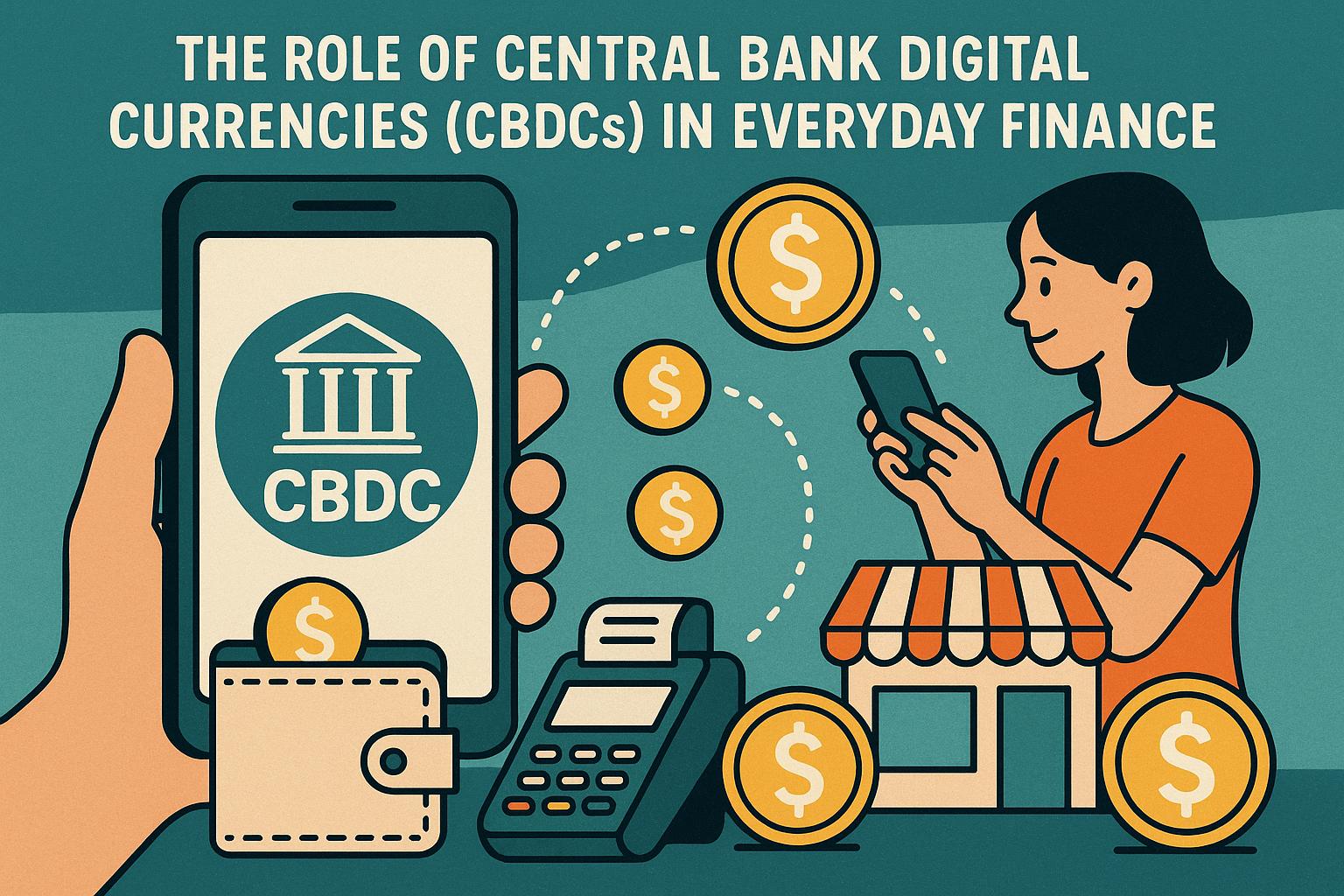The Emergence of Central Bank Digital Currencies (CBDCs)
Central Bank Digital Currencies (CBDCs) have increasingly become a topic of discussion in financial and economic circles. These digital forms of national currencies are issued and regulated by central banks. Unlike cryptocurrencies, which operate on decentralized networks, CBDCs are centralized and are intended to complement or replace physical currency.
Understanding CBDCs
CBDCs are essentially the digital equivalent of a nation’s fiat currency. They are stored in digital wallets and can be used for transactions like traditional money. The primary objective of deploying CBDCs is to enhance the efficiency and security of the payment systems. Implementation of CBDCs can potentially reduce transaction costs and facilitate real-time settlements.
Central banks around the world are exploring CBDCs as a means to adapt to the changing financial landscape. This adaptation is driven by the need to keep pace with technological advancements and the growing demand for digital transactions. As the use of physical currency declines and the global economy becomes more interconnected, CBDCs are positioned as a promising solution to the needs of modern commerce.
Potential Benefits of CBDCs
One of the key advantages of CBDCs is the potential to improve the overall efficiency of payment systems. By providing a safer and more efficient alternative to cash, CBDCs can help reduce the costs associated with producing and managing physical currency. Furthermore, CBDCs can enhance financial inclusion by making financial services more accessible to unbanked populations.
The universality of digital currency usage makes CBDCs an attractive option for expanding financial inclusion. In many regions, especially in developing economies, a significant portion of the population remains unbanked due to a lack of access to traditional banking infrastructure. CBDCs could bridge this gap by enabling peer-to-peer transactions directly via mobile devices, allowing individuals to partake in the formal economy without needing a traditional bank account.
CBDCs also have the potential to streamline cross-border transactions. Current systems for international payments can be slow and expensive, often involving multiple intermediaries. With CBDCs, the process can be expedited, lowering transaction costs and reducing the time taken for funds to clear.
In situations involving international trade and remittances, the benefits of CBDCs could be pivotal. The speed and lower costs associated with CBDC transactions might encourage greater economic activity between nations, as businesses and individuals alike gravitate towards more efficient methods of transacting globally. This could result in not only economic growth but also strengthened financial ties between countries.
Impact on Monetary Policy
CBDCs could have significant implications for how monetary policy is conducted. With digital currency directly controlled by central banks, new tools could be developed to implement monetary policy more effectively. For instance, central banks could potentially implement negative interest rates more efficiently through CBDCs.
By giving central banks more direct control over monetary supply, CBDCs open up new avenues for policy interventions. Rather than relying solely on traditional tools such as interest rates and reserve requirements, central banks could use CBDCs to implement precise and targeted economic stimulus measures. This might be achieved by crediting digital currency directly to citizens’ accounts or implementing dynamic interest rates to influence spending patterns.
Moreover, the use of CBDCs could enhance the transmission of monetary policy actions to the broader economy. Traditional policy measures can sometimes take time to have the desired economic impact. With CBDCs, central banks might be able to implement policies with immediate effect, impacting consumer and business behavior more directly.
Challenges and Concerns
Despite the potential benefits, the implementation of CBDCs is not without challenges. Privacy concerns are often cited as a major issue, as the digital nature of CBDCs could allow for increased surveillance of transactions by central authorities. Balancing privacy with the need to prevent illicit activities remains a complex challenge.
The tension between maintaining transaction privacy and ensuring compliance with regulations to prevent money laundering and other illegal activities is a delicate issue for policymakers. The implementation of CBDCs would require robust privacy controls to protect users while enabling necessary oversight for regulatory compliance. Developing the technological and legal frameworks to address these concerns will be essential for the widespread acceptance of CBDCs.
Security is another vital concern. Protecting CBDCs from cyberattacks and ensuring the resilience of the digital ledgers is paramount. CBDCs must be designed with robust cybersecurity measures to prevent fraud and ensure the integrity of the financial system.
The decentralized nature of traditional cryptocurrencies provides them with certain security advantages. However, CBDCs, being centralized, need a different approach to ensure their protection against cyber threats. Designing CBDCs with state-of-the-art security features and conducting regular audits will be crucial in safeguarding these currencies against potential security breaches.
Moreover, the introduction of CBDCs could disrupt the traditional banking sector. Banks might face increased competition for deposits, potentially impacting their ability to lend. It is crucial that any implementation of CBDCs considers the broader effects on financial stability.
The potential reduction in banks’ role as financial intermediaries could lead to new challenges in monetary policy transmission and economic stability. Finding a balance between innovation and maintaining the essential functions of traditional financial institutions is critical for the successful integration of CBDCs within existing financial ecosystems.
Conclusion
CBDCs represent a significant evolution in the realm of digital finance, potentially offering numerous benefits. However, their successful implementation requires careful consideration and an analysis of their implications on existing financial systems. Policymakers and financial institutions must work collaboratively to address the challenges posed by CBDCs, ensuring they are integrated effectively and securely into everyday finance.
With the appropriate infrastructure and legal frameworks in place, CBDCs could transform the way transactions are conducted globally. The collaboration between governments, central banks, and financial institutions will be key in navigating the transition towards digital currencies successfully. As more countries explore the possibilities offered by CBDCs, this new frontier in digital finance may redefine economic dynamics and open up opportunities for innovation and growth.
For further reading on the progress and implications of CBDCs in various countries, you can explore additional resources from financial organizations and trusted news outlets. As the journey towards digital currencies evolves, continuous research and dialogue will be instrumental in shaping the future landscape of global finance.
This article was last updated on: October 9, 2025







